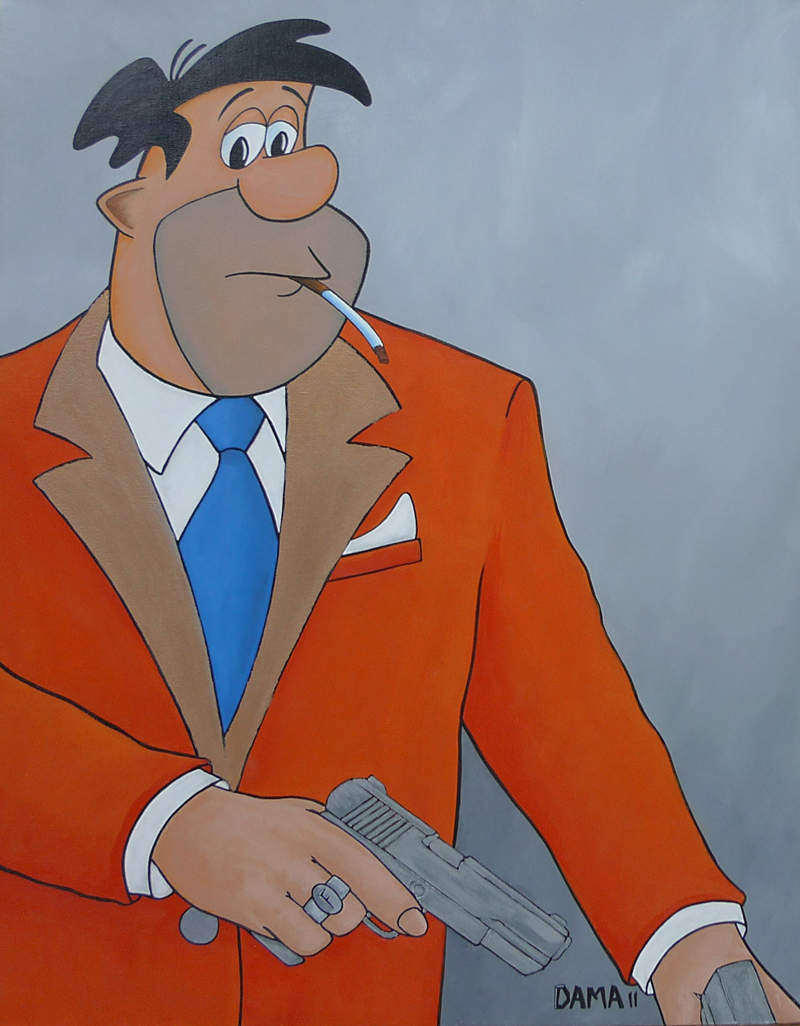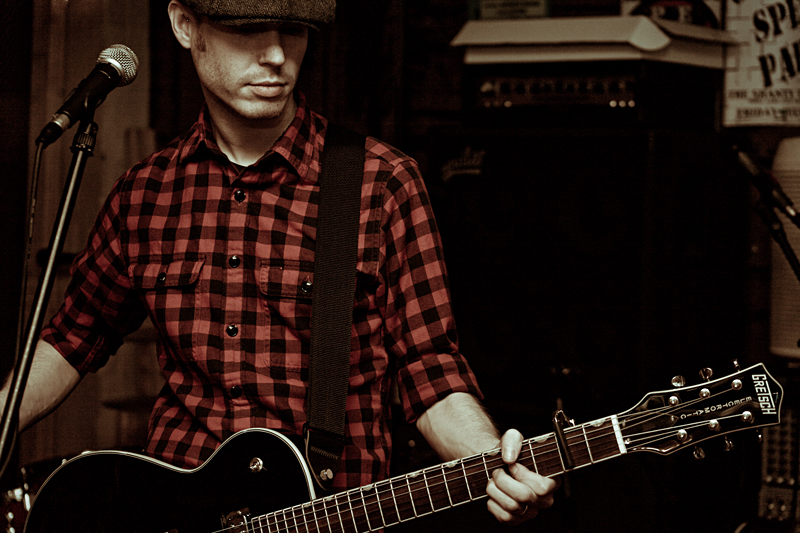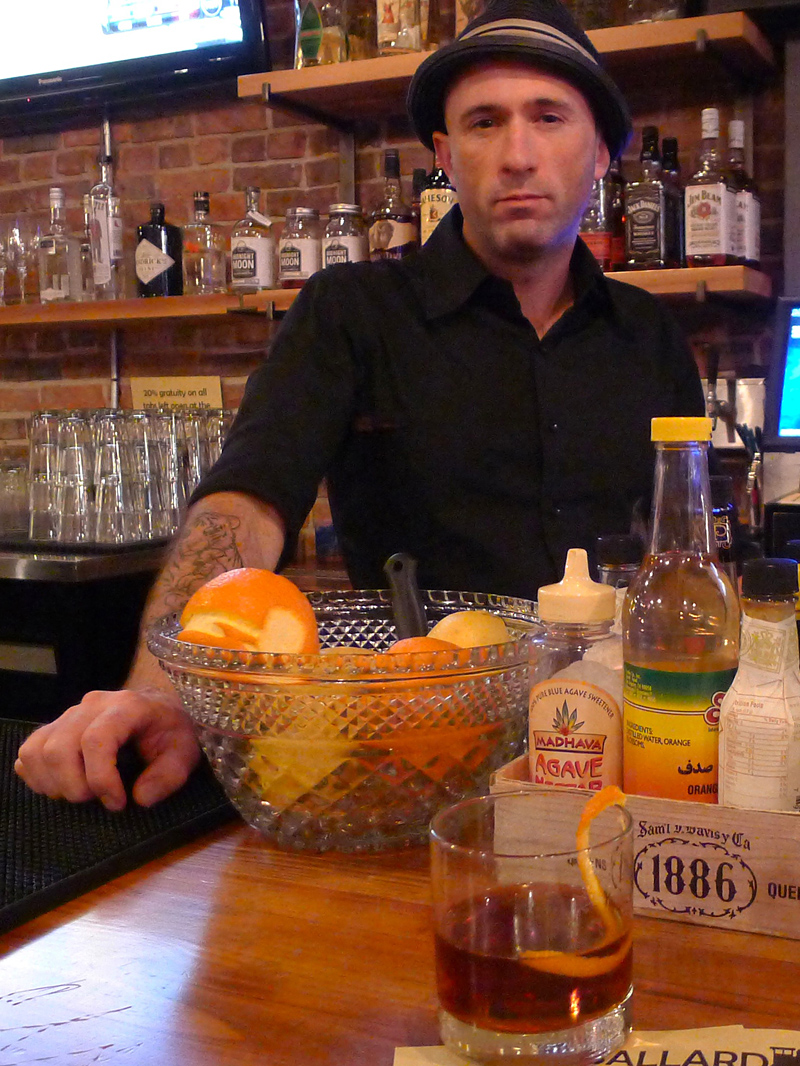In a classroom 30 miles northeast of Seattle, a dozen art students are busy discussing their work, posing for portraits, and putting the finishing touches on paintings for an exhibition, Non-Sufficient Funds, that opens Thursday night at Vermillion on Capitol Hill. One student has rendered Fred Flintstone smoking a cigarette and brandishing two semiautomatic pistols. Another explains his abstract piece, telling how the quotation he embossed into its mottled crimson background was plucked from Vladimir Nabokov’s Invitation to a Beheading.
The students, however, aren’t enrolled at some hip new Northwest art institute. They’re inmates at the Washington State Reformatory in Monroe, and their classroom is just around the corner from the prison chapel where guard Jayme Biendl was strangled to death this past January.
The art class is administered by University Beyond Bars (UBB), a small, six-year-old nonprofit that offers college-level instruction in a handful of subjects to approximately 120 Monroe prisoners. About half the art students are serving life sentences, but in this particular classroom, their only supervision is a visiting teacher and the prison’s media-relations director.
At one point a towering female guard with her hair neatly braided into cornrows saunters into the classroom. She peers over the shoulder of David White, creator of the gangster Fred Flintstone, and admires another of his works. It’s a satire of Da Vinci’s The Last Supper, with Mickey Mouse as Jesus flanked by an assortment of Looney Toons, Family Guy, and Simpsons characters as apostles feasting on pills and beer. “I love Popeye!” the guard gushes. “He was my guy.”
She walks away and White, 40, breathes a sigh of relief. “You know that feeling when you’re driving down the road and a cop pulls up behind you?” he asks. “That’s how that just felt. I’m like ‘Am I doing something wrong?’ “
After Biendl’s murder by Byron Scherf (who goes to trial this summer), prison officials put the facility on total lockdown for six weeks. The art class and other programs were suspended until recently, and the chapel, once used as a classroom for other UBB courses, remains closed indefinitely.
The distrust and hostility the killing spawned shows through in the art. On a bright yellow background laced with roses, Joseph Allen composed a message that reads in part, “Please don’t blame or punish me for what you know others have done. This only serves to make me skeptical and extremely paranoid.”
“Everybody knew Scherf was nuts,” grumbles Allen, who sports a bushy beard and myriad tattoos. “Nobody sat by him, ’cause he was a scary guy.”
“It was a tragedy, man,” adds Mel Tangen, another prisoner/artist. “I truly believe if any of my friends would’ve seen that happening, we would’ve stopped it.” Tangen produces one of his recent works, a painting of a fire-red devil with a wicked grin, and says, “After that happened, I actually drew a portrait of that guy. Looks just like him, don’t it?”
Of course, not every piece in the prison class was inspired by violence. The exhibition at Vermillion, the first of its kind, will feature more than 60 works from a dozen prison artists. And from outside Monroe’s walls, locals Paul Rucker and Buddy Bunting will include artworks that comment on America’s “prison-industrial complex.” (Proceeds from sales benefit UBB.)
The show’s title is taken from the “non-sufficient funds” message stamped on prison correspondence when an inmate doesn’t have the money to cover postage. It also doubles as a statement about the amount of tax dollars spent on prisons, according to Peter Brook, a UBB board member who teaches the Monroe class and organized the show. Brook also edits Prison Photography (prisonphotography.wordpress.com), a blog about “the production of images within sites of incarceration,” and writes for Wired.com‘s photography blog. He established the class in 2009 as a way to merge his passion for “artistic inquiry”—he’s a critic, not a trained artist—with “direct action” for prison reform.
“I think there’s a lot of warehousing that goes on in American prisons,” Brook says. “I don’t think that makes people better. I think that makes people worse people. About 80 percent of prisoners will eventually be released. That’s why it’s so important to offer them the chance for education. It stands to reason that you should improve people so they don’t repeat what they did in the first place.”







